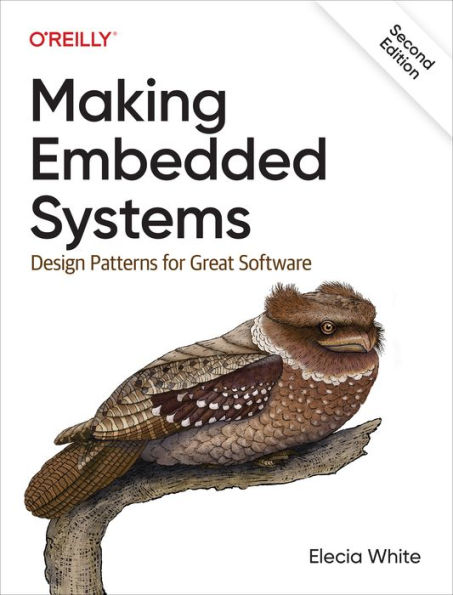Interested in developing embedded systems? Since they don't tolerate inefficiency, these systems require a disciplined approach to programming. This easy-to-read guide helps you cultivate good development practices based on classic software design patterns and new patterns unique to embedded programming. You'll learn how to build system architecture for processors, not for operating systems, and you'll discover techniques for dealing with hardware difficulties, changing designs, and manufacturing requirements.
Written by an expert who has created systems ranging from DNA scanners to children's toys, this book is ideal for intermediate and experienced programmers, no matter what platform you use. This expanded second edition includes new chapters on IoT and networked sensors, motors and movement, debugging, data handling strategies, and more.
- Optimize your system to reduce cost and increase performance
- Develop an architecture that makes your software robust in resource-constrained environments
- Explore sensors, displays, motors, and other I/O devices
- Reduce RAM and power consumption, code space, and processor cycles
- Learn how to interpret schematics, datasheets, and power requirements
- Discover how to implement complex mathematics and machine learning on small processors
- Design effective embedded systems for IoT and networked sensors
Interested in developing embedded systems? Since they don't tolerate inefficiency, these systems require a disciplined approach to programming. This easy-to-read guide helps you cultivate good development practices based on classic software design patterns and new patterns unique to embedded programming. You'll learn how to build system architecture for processors, not for operating systems, and you'll discover techniques for dealing with hardware difficulties, changing designs, and manufacturing requirements.
Written by an expert who has created systems ranging from DNA scanners to children's toys, this book is ideal for intermediate and experienced programmers, no matter what platform you use. This expanded second edition includes new chapters on IoT and networked sensors, motors and movement, debugging, data handling strategies, and more.
- Optimize your system to reduce cost and increase performance
- Develop an architecture that makes your software robust in resource-constrained environments
- Explore sensors, displays, motors, and other I/O devices
- Reduce RAM and power consumption, code space, and processor cycles
- Learn how to interpret schematics, datasheets, and power requirements
- Discover how to implement complex mathematics and machine learning on small processors
- Design effective embedded systems for IoT and networked sensors

Making Embedded Systems: Design Patterns for Great Software
428
Making Embedded Systems: Design Patterns for Great Software
428Related collections and offers

Product Details
| ISBN-13: | 9781098151508 |
|---|---|
| Publisher: | O'Reilly Media, Incorporated |
| Publication date: | 03/01/2024 |
| Sold by: | Barnes & Noble |
| Format: | eBook |
| Pages: | 428 |
| File size: | 9 MB |
